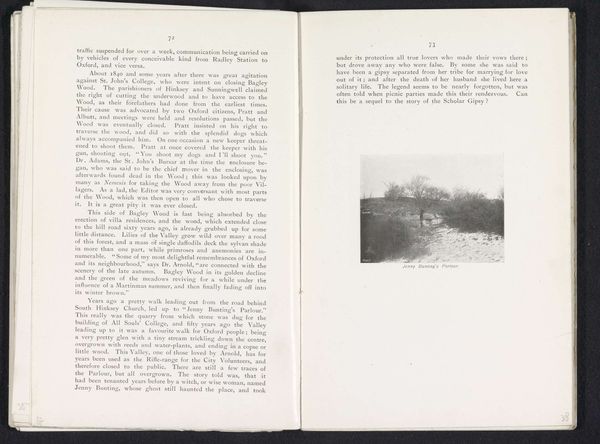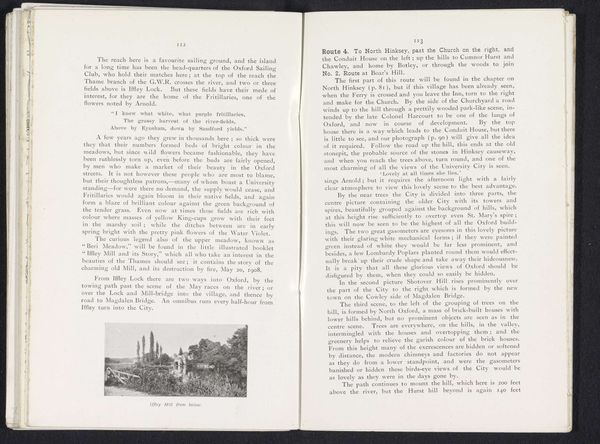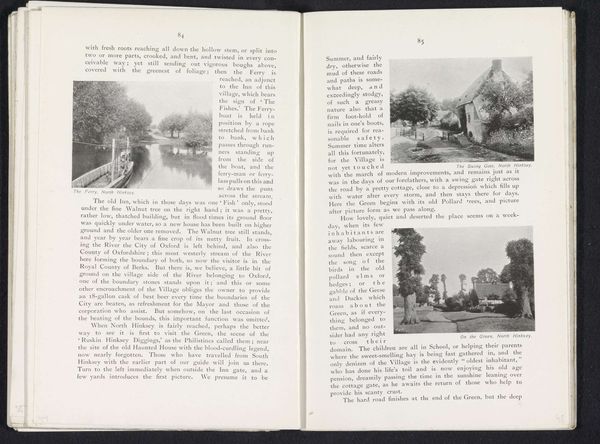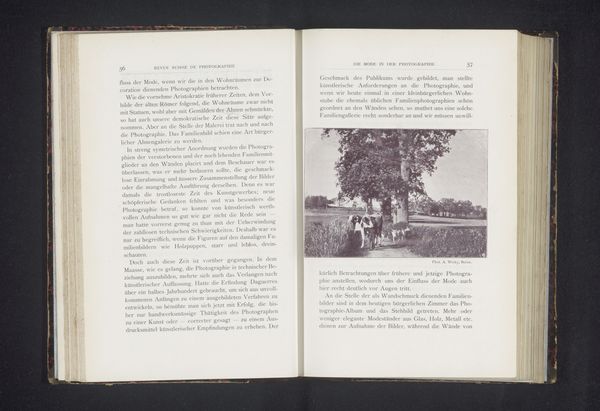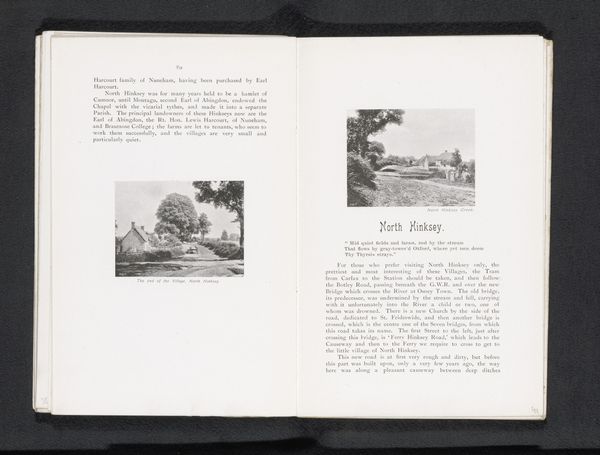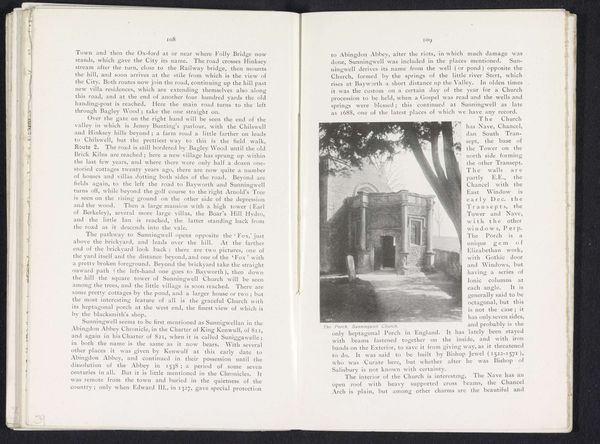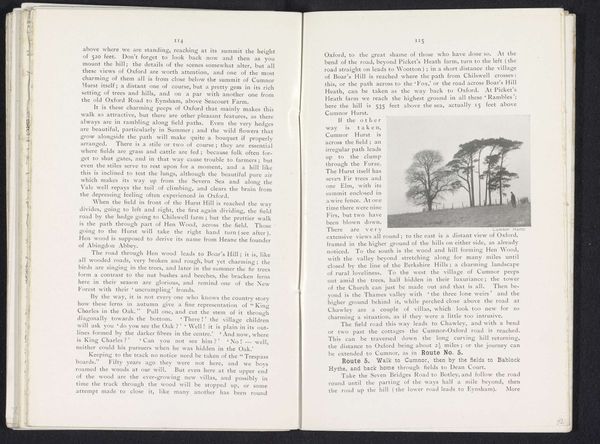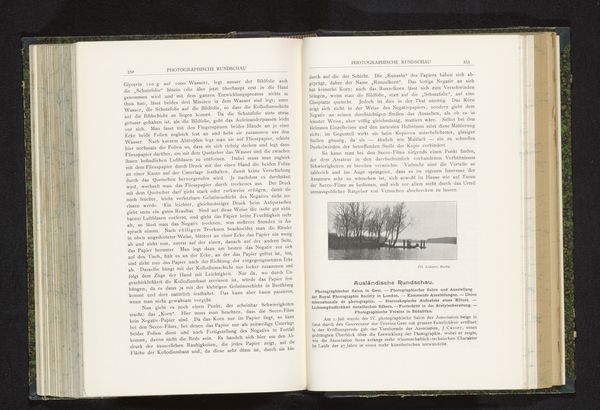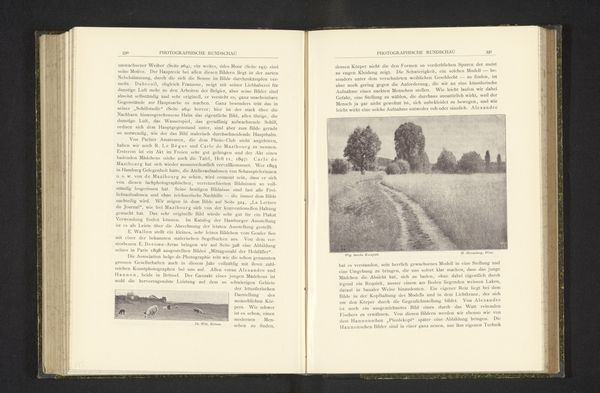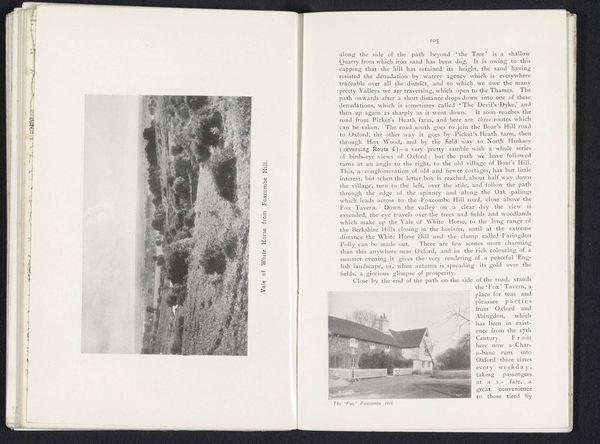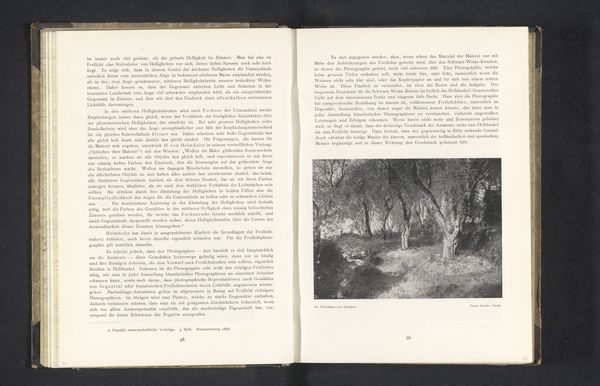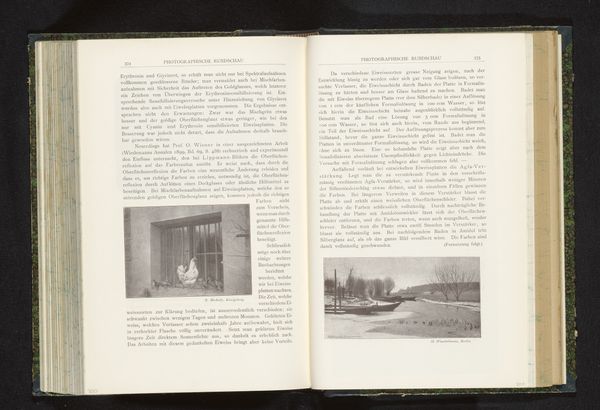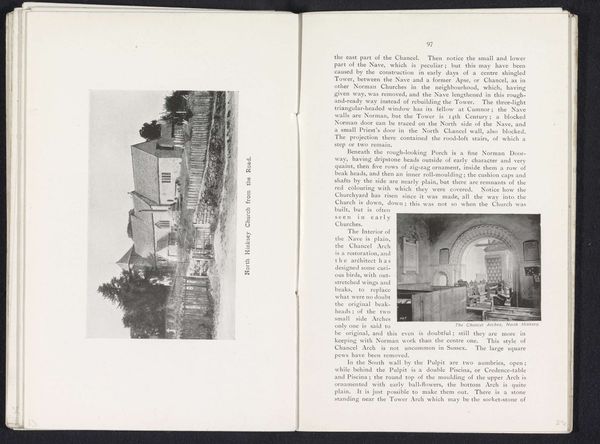
print, photography, gelatin-silver-print
# print
#
landscape
#
photography
#
gelatin-silver-print
#
building
Dimensions: height 55 mm, width 75 mm
Copyright: Rijks Museum: Open Domain
Curator: Let's discuss this photograph, "By the Old Mansion," taken by Henry W. Taunt sometime before 1912. It's a gelatin-silver print depicting, as the title suggests, a building partially obscured by trees. Editor: My first impression is that it’s melancholy. The monochrome palette and somewhat obscured architecture evoke a sense of faded glory and secrets buried by time. It looks like a place stories whisper from. Curator: Precisely. Taunt was a keen observer of the changing landscape of Oxfordshire, and he was interested in preserving a visual record of buildings and sites before they disappeared due to modernization or neglect. This image shows more than architecture, it reflects social and economic shifts that affected rural communities at the turn of the century. Editor: I'm drawn to the two figures on the right, perhaps villagers. They almost appear as part of the landscape, dwarfed by the trees and the old building. The presence of people always intrigues, adding another layer of historical interpretation when placed against natural spaces. It suggests a strong relationship between humanity and nature. Curator: It is believed the setting is related to local legends involving Mark Scragg, a miser said to have bargained with the devil. Notice the strange shapes in the trees. A text adjacent to this picture, not presented here, explains there's some "haunted mansion" and mentions "Old Witches' Elms". Editor: Now that you mention it, the gnarled branches of the trees, particularly the larger one, almost appear as grasping, skeletal limbs. The house is hunched down in the image behind these arms; it is as if they’re shielding something from the viewer. The photograph hints at dark folklore—a sense of unseen forces. It's a narrative encoded in visual symbols. Curator: Taunt's photograph, presented in book format, gives weight to Arnold's tales. There were clear anxieties around poverty and modernization and an understanding of the fragility of folk tales against social change, or what happens when the forces of capitalism take over a landscape with pagan lore. Editor: It’s fascinating how a simple landscape photograph can become a repository of social commentary, visual storytelling, and historical observation. It's far more than just a building; it's a cultural document. Curator: I agree. Taunt captured a fleeting moment and allowed us to glimpse not just a building but also its cultural relevance in Oxfordshire.
Comments
No comments
Be the first to comment and join the conversation on the ultimate creative platform.
